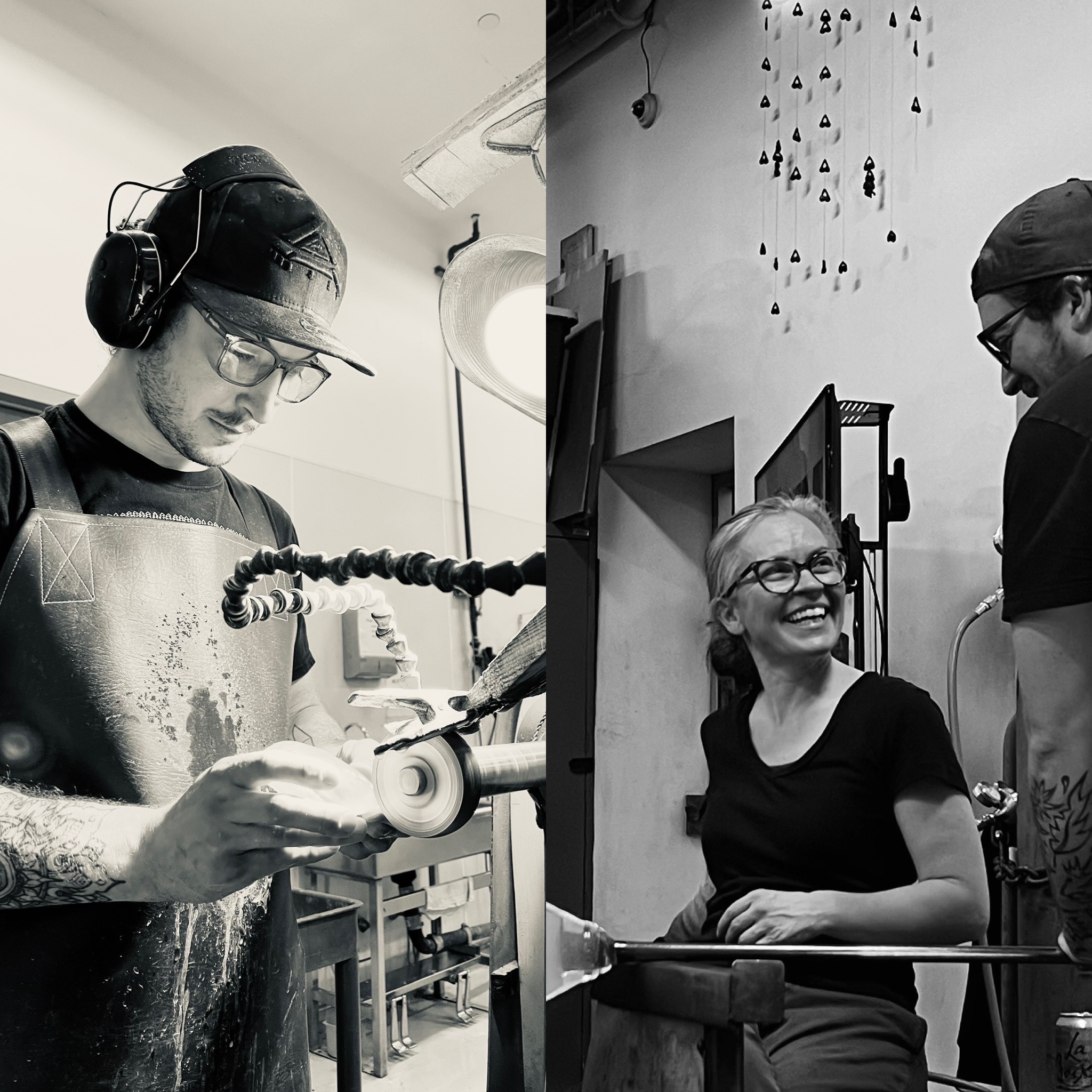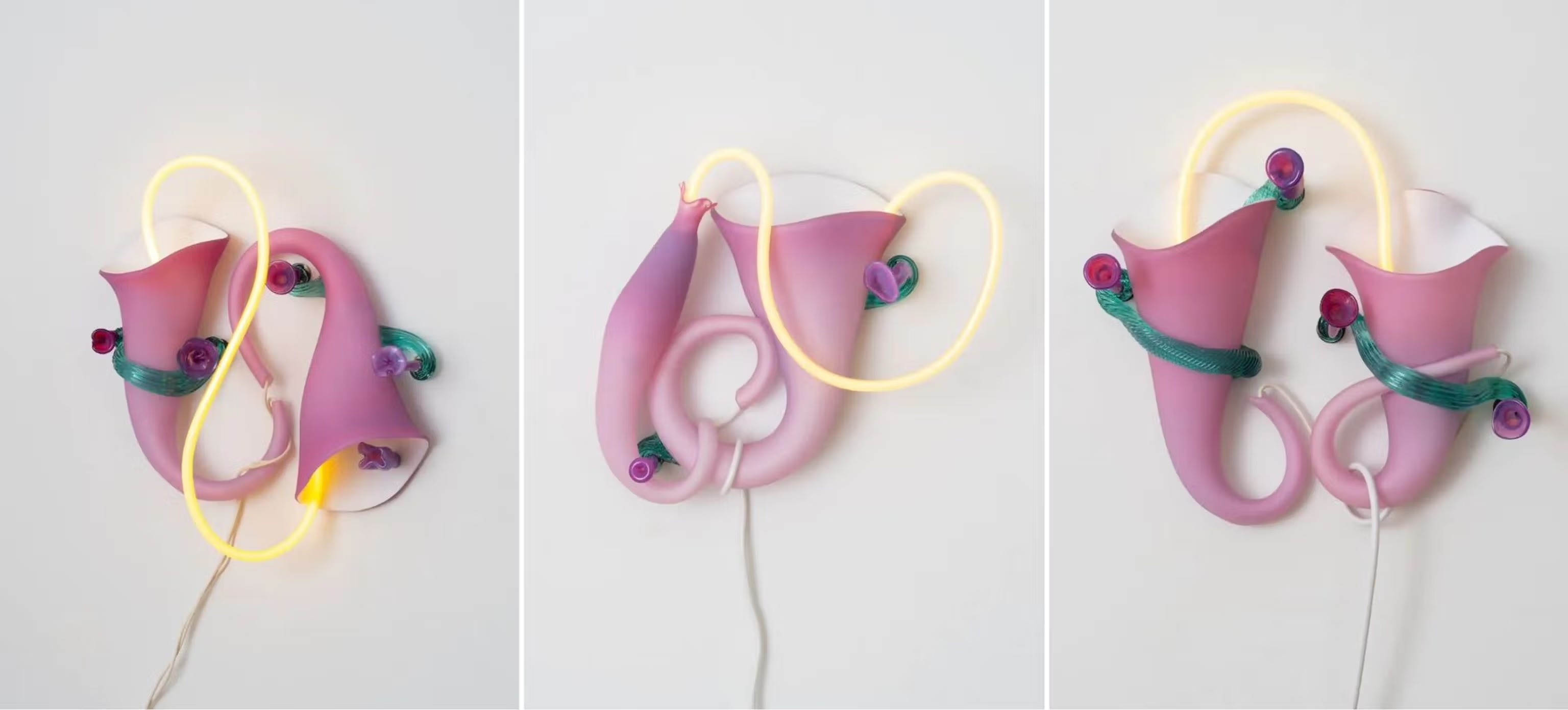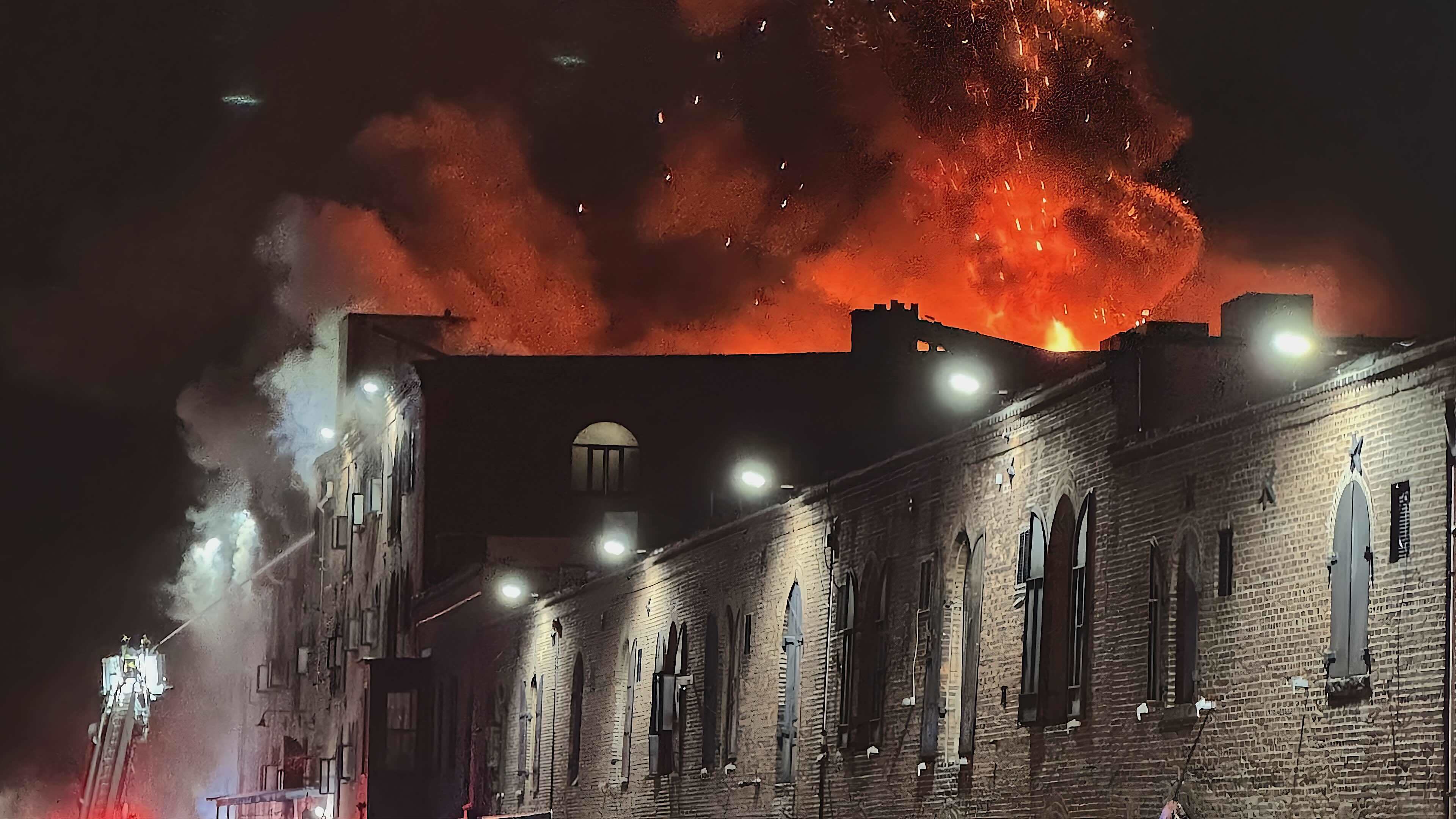The first calls to the fire department came in just before midnight on Wednesday, September 17, 2025. Soon after, urgent texts about the blaze rocketed among the dozens of artists who had studios in the 19th-century warehouse building at 481 Van Brunt Street in the waterfront neighborhood of Red Hook, Brooklyn. Here, in one of the most expensive cities in the U.S., rare affordable rents had made the building a destination for glass artists as well as woodworkers, furniture designers, and painters, who often subdivided their spaces, creating a communal space for art in all media.
After a sleepless night of worry, artist and educator Dean Erdmann and their partner, Grace Whiteside, arrived to a chaotic scene at 7 a.m. As they made their way past the fire and police lines, Erdmann and Whiteside were stunned to see a fireboat pumping a massive plume of water onto the roof, which had partially collapsed onto their shared Sticky Glass studio space on the fourth floor. Even more devastating than losing the tools and studio space they had occupied for the past three years was the total loss of completed work destined for three important exhibitions in 2026 and 2027.

“Exhibitions are the primary way I share my work with the public, engage in dialogue with peers, contribute to broader cultural conversations,” says Erdmann, who totals their losses of work, tools, and materials at $150,000. They are an assistant professor at the University of California, San Diego and the 2025 Chinati Artist in Residence, Marfa, Texas. “This loss is both personal and professional—a major setback for my artistic practice.”
In addition to a GoFundMe for direct financial support, Erdmann has been looking for materials and studio space. “Whether through financial contributions, in-kind donations, pro bono studio access, or materials, it would make a meaningful difference,” says Erdmann, citing specific needs such as access to glassmaking resources, fabrication space, and materials such as wax, glass billet, plaster, and silica.
Erdmann shared studio space with partner, Whiteside, who took a risk when the latter opened Sticky Glass in 2020, investing all their savings into the space. The September fire not only destroyed all of Whiteside’s design prototypes, individual works, tools, and research materials, it wiped out their archive of work from the past decade.

“I poured everything I’ve ever earned into this business, and before the fire, we were looking forward to exciting opportunities,” Whiteside told the Glass Quarterly Hot Sheet. They are accepting direct donations via their GoFundMe Page
Inna Babaeva, an artist originally from Ukraine, had just moved into Sticky Studios in May 2025, where she was able to bring all her artwork out of separate storage and enjoy “a happy and productive summer” before two decades’ worth of work were consumed in the blaze. “For me, the ability to produce work would be the most important factor right now,” she explains, as she cannot accept exhibition opportunities with nothing to show. Like others, Babaeva is hoping to raise money to help with making new work: “Any assistance with the production costs would be the most beneficial to me,” she says.

Like Babaeva, artist Malcolm Kriegel had only recently moved into the building, sharing a studio with UrbanGlass coworker Jessi Moore, and had consolidated his artworks from storage in New Orleans, where he had attended Tulane. As artists haven’t been allowed into the structurally compromised building since the fire, he has been struggling to process everything.
“One of the hard parts for me is I won’t be able to see the wreckage of things I lost,” he told Glass. “In my brain, it’s all still exactly where it was. Seeing the image of the firehose spraying up and through down to the third floor was pretty emotional for me.”
Reached on the West Coast shortly after the fire, Kriegel’s studio mate Moore shared the surreal feeling of having lost so much but being unable to set eyes on the wreckage or even be there in person. “The studio was an archive of old work, a documentation of my practice’s history, and every single piece of kiln forming I did,” she said. Among her loses were small kilns, tools, and a store of Bullseye glass.
A joint GoFundMe has been set up for both Kriegel and Moore to help them with move on from the total loss of their artworks and studio tools. "In times like these, we turn to our community for support," writes Shuhei Fuji, their colleague who set up the collective fundraising effort on GoFundMe.

Pam Sabroso lost her studio space that came along as a perk of her job working for artist and designer Jeff Zimmerman, who had a large studio in the building. More importantly, she lost all the prototypes for a design line she had been developing with her partner, Trevor Ninos.

“New York is crazy expensive now, so even for us to have been able make that work took years of effort and ideas,” Sabroso said, echoing a theme of all the artists interviewed for this article: that beyond the loss of work, the loss of the affordable studio space will be equally hard to replace.
The local group Red Hook Business Alliance has set up a general donation site on GoFundMe.com, where you can give not only to the glass artists, but to the wide range of those impacted by the fire. To donate directly to individual artists, search by name on GoFundMe, where each has their own fundraiser. UrbanGlass, the Brooklyn nonprofit art center that publishes Glass, has set aside $15,750 worth of studio time, which it is dividing between the seven glass artists who have applied. All artists cited here are grateful for donated funds, materials, or studio access as they work to recover their art practices.



